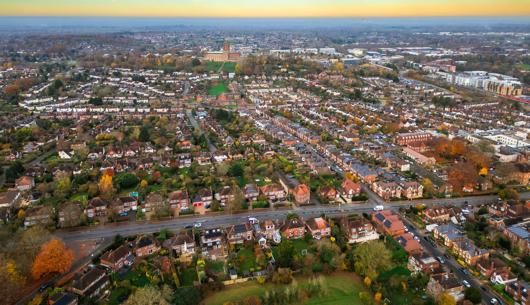Local planning authorities may now agree to extend the time period for determining prior approval applications
On 31 January 2020 the High Court handed down judgment in Gluck v Secretary of State for Housing Communities and Local Government [2020] EWHC 161 Admin
This article is taken from February's public matters newsletter. Click here to view more articles from this issue.
On 31 January 2020 the High Court handed down judgment in Gluck v Secretary of State for Housing Communities and Local Government [2020] EWHC 161 Admin. The judgment allows developers and local planning authorities to agree extensions of time for the determination of prior approval applications, overturning the precedent previously established in R (Warren Farm (Wokingham) Limited) v Wokingham Borough Council [2019] EWHC 2007 (Admin).
The cases of Gluck and Warren Farm both turned on the interpretation of Article 7 of the Town and Country Planning (General Permitted Development) (England) Order 2015 (‘“GPDO’”).
The GPDO operates as a deemed grant of planning permission for the classes of development specified in Parts 1 – 19 of Schedule 2 of the order, conferring ‘“permitted development” ’ rights without the need to apply for planning permission. The overall intention is to allow certain types and scales of development to proceed more quickly, and with less onerous requirements beforehand.
Article 3(1) of GPDO grants planning permission for the classes of development described as permitted development in Schedule 2 of the order but Article 3(2) provides that any permission granted by Article 3(1) is ‘“subject to any relevant exception, limitation or condition specified in Schedule 2”’.
Permitted development rights for certain classes of development are granted subject to a condition that the applicant must first either seek a determination from the local planning authority as to whether or not prior approval is required; or obtain the local planning authority’s prior approval.
The case of Gluck concerned Part 3 Class O permitted development rights which allow a change of use from offices to residential accommodation. Para O.2. of Part 3 of Schedule 2 to GPDO imposes the following conditions on the grant of permitted development rights:
- Before beginning the development, the developer must apply to the local planning authority for a determination as to whether prior approval is required; and
- Development must be completed within a period of 3 years starting with the prior approval date.
The procedure for dealing with applications for prior approval under Part 3 is set down in paragraph W which states at (11) that “the development must not begin before the occurrence of one of the following…. (c) the expiry of 56 days following the date on which the application [for prior approval] was received by the local planning authority without the authority notifying the applicant as to whether prior approval is given or refused”.
The practical effect of paragraph W(11) is that if a local planning authority fails to determine an application for prior approval within the 56 day timescale then the local planning authority forfeits the right to refuse to grant prior approval for the development and the developer may commence development on the 57th day.
However, Article 7 of GPDO 2105 provides that:
“Where, in relation to development permitted by any Class in Schedule 2 which is expressed to be subject to prior approval, an application has been made to a local planning authority for such approval or a determination as to whether such approval is required, the decision in relation to the application must be made by the authority—
“(a) within the period specified in the relevant provision of Schedule 2,
“(b) where no period is specified, within a period of 8 weeks beginning with the day immediately following that on which the application is received by the authority, or
“(c) within such longer period as may be agreed by the applicant and the authority in writing.”
It is fair to say that in general developers and local planning authorities had interpreted Article 7(c) as allowing them to agree an extension to the 56 day timescale for determining an application for prior approval. It is a long-standing practice that extensions of time are routinely agreed for planning applications, as there are often mutual benefits: a) the local planning authority maintains a good performance record for determinations within the statutory timetable, and avoids risking the developer seeking the refund of application fees; and b) the developer avoids a premature refusal of the application if there are material issues yet to be addressed. By this mechanism, a positive approach on both sides is encouraged, with time for negotiations to resolve outstanding matters, and the likelihood of costly and expensive planning appeals is reduced. Similar benefits can often occur in relation to prior approval applications.
However, on 13 July 2019 Mr Mark Ockelton (sitting as a Deputy Judge of the High Court) effectively ended the practice by ruling that Article 7(c) is only available as an alternative to Article 7(b) (i.e. where the GPDO gives no set timeframe in which to determine prior approval applications) and not to Article 7(a). Since the decision in Warren Farm, local planning authorities have regarded themselves as unable to agree to extensions of time for prior approval applications, even where the developer was keen to agree such an extension.
In the case of Gluck, an application for prior approval had not been determined within 56 days of its submission. The local planning authority argued that an agreement had been made to extend the determination period; whereas the developer contended (in line with Warren) that there was no such power, and therefore the development could proceed as “‘permitted development”’. Two weeks ago, Holgate, J corrected the misinterpretation of the GPDO in Warren by determining (at paragraph 85 of his judgment) that:
“Article 7 must be read as if limb (c) is an alternative to both limbs (a) and (b). The consequence is that any of the prior approval time periods specified either in Schedule 2 or in Article 7 is capable of being extended by an agreement by the applicant and the LPA in writing. The decision in Warren Farm should not be followed.”.
Holgate J reasoned that Article 7 must be interpreted in the wider context of the GPDO and its parent Act the Town and Country Planning Act 1990. When read together with Schedule 2 it was clear that Parliament had intended that the time limits for determining applications for prior approval should be capable of extension by written agreement. He provided a thorough and considered review of the relevant statutory provisions, assisted in this by the work of Counsel for both parties.
He observed that the opening words of Article 7 make it plain that it applies to any development permitted by Schedule 2 which is subject to prior approval; and that the words preceding limbs (a) to (c) make clear that both applications for prior approval and applications to determine whether prior approval is required fall within its ambit.
Holgate J was also mindful of the consequences of interpreting Article 7(c) too literally, as had been the case in Warren Farm, which would inevitably lead to more planning appeals, more delays to development in the planning system and a greater administrative burden for local planning authorities, the planning inspectorate and SoS.
The decision will come as a welcome relief to local planning authorities who will find considerable comfort in the knowledge that they can now extend the statutory timescale for determining such applications with the written agreement of the developer. Although on first glance it may seem advantageous to developers to compel local authorities to determine these applications within 8 weeks or confirm permitted development rights by default, in the long run this ruling is likely to assist them also. An increase in premature refusals, appeals and delays assists no one.
The case of Gluck also provides helpful guidance on what constitutes a written agreement for the purpose of Article 7(c), with Holborn J ruling (at paragraph 102) that “I do not think that limb (c) necessarily insists upon an agreement being expressed by both parties in writing…it is sufficient that a verbal agreement was made by both parties which was then appropriately evidenced in writing”.
However, while it may be legally sufficient to agree an extension verbally and to subsequently confirm this by email or some other written means, we would strongly encourage local planning authorities to ensure they obtain the developer’s written agreement to any extension.
Similarly, developers should consider carefully how they correspond with local planning authorities. If there are on-going discussions regarding, for instance, changes to flood risk reports and mitigation measures, these may be unresolved as the statutory time limit approaches. Those discussions may indicate that the local planning authority is waiting for further information which the developer has agreed to provide before a decision is made; and this could be interpreted as a tacit agreement to extend the time period. In those circumstances, a cautious developer would not proceed with the scheme in reliance on permitted development rights.
Clarity on both sides will help the system to function smoothly.
Contact

Victoria Searle
Principal Associate
victoria.searle@brownejacobson.com
+44 (0)330 045 2363








































